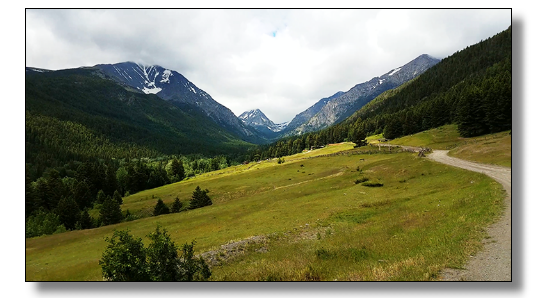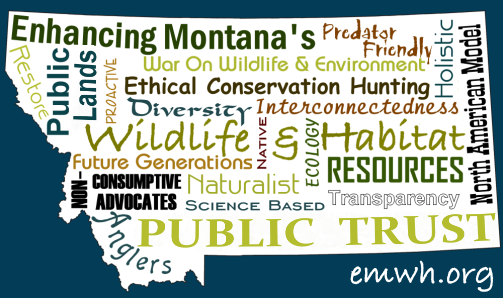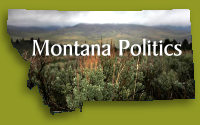
Consortium
For the Advancement of
Brucellosis Science (CABS)
& the Farm Bill
(just one of the money trails)
|
CABS (description & origin below) securing funding for brucellosis research Update Feb. 4, 2014 HR. 2642 (Farm Bill) - The amended Senate Bill 954 had passed in July 2013. In October 2013 a conference was held and the Farm Bill was amended again, language changes, becoming HR 2642, which passed the House on Jan. 29, 2014. Feb. 4, 2014 it passed the Senate and is on to the President to sign into law. Changes that were made was the exclusion of the specific provision, detailed below of 12101, Wildlife Reservoir Zoonotic Disease Initiative, which would have funded $35 million dollars over 5 years for a variety of zoonotic disease research, including brucellosis in wildlife reservoirs (elk, bison). What is in the current HR 2642 is Section 6405 (pgs. 384, 385). Competitive, Special, and Facilities Research Grant Act. This section states, "(a) Extension. - Subsection (b)(11)(A) of the Competitive, Special, and Facilities Research Grant Act (7 U.S.C. 450i(b)(11)(A)) is amended in the matter preceding clause (i) by striking '2012' and inserting '2018'." HR 2642 does not list a dollar amount for the research, which is broad and general. But when you look up that Code of Federal Regulations 7 (Agriculture) 450i "(11) Authorization of appropriations (A) In general There is authorized to be appropriated to carry out this subsection $700,000,000 for each of fiscal years 2008 through 2012, of which—" They also added "(C) by adding at the end the following new clauses:‘‘(ix) the research and development of surveillance methods, vaccines, vaccination delivery systems, or diagnostic tests for pests and diseases (especially zoonotic diseases) in wildlife reservoirs presenting a potential concern to public health or domestic livestock and pests and diseases in minor species (including deer, elk, and bison);" So instead of the specific S. 954 Sec. 12101. Wildlife Reservoir Zoonotic Disease Initiative of $7,000,000, a year, for 5 years, totaling $35,000,000, they resurrected the generalized Competitive, Special, and Facilities Research Grant Act. This section states, "(a) Extension. - Subsection (b)(11)(A) of the Competitive, Special, and Facilities Research Grant Act (7 U.S.C. 450i(b)(11)(A) for $700,000,000 a year, for 5 years, totaling $3,500,000,000. Much harder to track their intentions towards our wildlife in that general mess - the USDA APHIS shell game. S. 954 (Farm Bill) Funding - In the fall I downloaded the Farm Bill to see if my money trail research was in there as well. It was. I let a few people know what was there, that it was just a small part of a much bigger picture and that the bipartisan GYA state Senators and Representatives were involved with this. I have copied just the pages of the Farm Bill that deal with this funding, so you dont have to download over a 1000 page document and try to scroll through. Subtitle B - Livestock, Sec. 12101. Wildlife Reservoir Zoonotic Disease Initiative. Sec. 413 Wildlife Reservoir Zoonotic Disease Initiative. In order to receive this grant money, the entitity has to "conduct research and development of surveillance methods, vaccines, vaccination delivery systems, or diagnostic tests for covered diseases in - (A) a wildlife reservoir in the United States; or (B) domestice livestock or wildlife presenting a potential concern to public health." Zoonotic means it can pass to humans. How to sell wildlife vaccination (capture, test, slaughter the positives, then vaccinate the negatives) to wildlife agencies, hunting and conservation organizations - the shell game. I think it is great if the livestock industry pursues better vaccines for the livestock industry, but I dont agree with vaccine development and deployment against our wildlife. June 23, 2012 - CABS article - "New directions - Into the future, CABS decided that pursuing a vaccine targeted at livestock, rather than wildlife, would be a more advantageous direction of focus. 'Worldwide, this is a livestock issue,' commented Assistant Director of the Louisiana Agriculture Experiment Station Phil Elzer. 'If we stop the livestock disease, the human aspect goes away. Wildlife is secondary worldwide.' " So CABS starts selling this provision as livestock vaccine research. Just a note - domestic bison and game farm elk are considered "livestock". So they can say they are pursuing livestock vaccines in their sales pitch, and actually be truthful. Problem is, you can lie by omission or not qualifying a statement. Notice the date here of June 2012. Sept. 2013 (again, note the later date), University of Wyoming, Seeking Solutions article (saved webpage in case they remove the link). Jeff Adamovicz, a CABS science member from the University of Wyoming stated, "Adamovicz seeks development of a vaccine for elk and also looks at current vaccination procedures for cattle. Ph.D. student Amanda Dougherty is studying elk response to infection, " "Cows aren’t elk, but what’s different in the elk’s immune system? 'I’m currently using techniques to assess the immune function in elk in response to brucellosis,' says Dougherty. 'The immune system is poorly understood, and one of the goals of the governor’s task force was to look at the immune function in elk.' Former Gov. Dave Freudenthal created the Brucellosis Coordination Team in 2004 to chart a course for brucellosis management. Frank Galey, dean of the College of Agriculture and Natural Resources, chairs the group. Elk have a different response to the disease, but no one understands why. Dougherty is also identifying genes of Brucella important during infection in elk."
|
Kathryn QannaYahu
What is CABS? Below are documents * from the CABS website
at the University of Wyoming. They are the only ones available there.
I requested the current membership from Dr. Cook. "The Consortium for the Advancement of Brucellosis Science (CABS) is a cooperative research and outreach effort among scientists and stakeholders. The CABS has been formed to provide broad scientific guidance to research efforts it supports with a focus on immunology, vaccines, and diagnostic tests. The ultimate goal of the CABS is to work toward successful brucellosis disease control and prevention, and to conduct stakeholder outreach." When you download their Information Kit, you receive not only their documents, but you receive the APHIS Concept Paper from 2009, which states, "The goal of the program is to eradicate brucellosis from the United States." "Despite cooperative Federal-State-industry efforts to eradicate this disease and the significant progress we have made, final eradication will not become possible unless the country adopts new strategies to address current challenges. Eradication depends on finding the last remaining brucellosis-reactor animal, the last remaining brucellosis-affected herd, and eliminating the disease from wildlife reservoirs. All potential risks for exposure and transmission of brucellosis from infected wildlife populations must be mitigated and eliminated as well. Currently, the last known reservoir of disease is the wildlife populations in the GYA. A new direction is needed that will allow VS and States to apply limited resources effectively and efficiently to this unique disease risk."(pg. 2) You also receive the United States Animal
Health Association (USAHA) 2009
Resolution, which endorses the creation of the Consortium For
the Advancement of Brucellosis. Here are the following documents CAB produces to explain who and what they are: CABS Team * (2010, some changes in Team members have occurred.) "The ultimate goal of the CABS is to conduct stakeholder outreach and partner with state and federal policy makers to fund research initiatives that will work towar successful brucellosis disease control and prevention in free-ranging bison and elk in the Greater Yellowstone Area (GYA). The GYA is the last remaining reservoir of brucellosis in the United States.
|
APHIS Brucellosis Eradication In Wildlife Agenda Page The Laramie Agenda 2006 Origin of CABS The Laramie Agenda Technical Report 2006 - Enhancing Brucellosis Vaccines, Vaccine Delivery, and Surveillance Diagnostics for Elk and Bison in the Greater Yellowstone Area Brucellosis Consortium continues to work toward test, vaccine goals - Article Oct. 2011 "Galey notes that CABS has tremendous support from senators from Wyoming, Montana and Idaho, and that he has met with them and their staffers in Washington, D.C., as well as several members of the U.S. House from the region. 'They've agreed to put together some proposed language in the next Farm Bill that would hard-wire some money for the Consortium to the tune of $1.8 million per year for the next 10 years to develop some candidate vaccines and develop a better test,' says Galey." "More importantly, explains Galey, the USDA can choose to fund CABS, but has chosen not to. 'They have a consortium program where they can competitively look at a proposal, and they've refused to see ours,' says Galey. 'The word is they're not interested in brucellosis at USDA research. USDA APHIS is interested, but their sister agency, the National Institute of Food and Agriculture, is not. When I approached them about APHIS's worry about brucellosis, they said the stakes were too small.' " Consortium continues brucella research in new directions - Article June 2012 "In the future, CABS decided that pursuing a vaccine targeted at livestock, rather than wildlife, would be a more advantageous direction of focus. 'Worldwide, this is a livestock issue,' commented Assistant Director of the Louisiana Agriculture Experiment Station Phil Elzer. 'If we stop the livestock disease, the human aspect goes away. Wildlife is secondary worldwide.'...The group also identified funding as a primary issue, but Galey's work with Congress provided for the inclusion language in the Farm Bill regarding funding for zoonotic diseases with a reservoir in wildlife, focusing on B. abortus and tuberculosis" Wyoming Brucellosis Coordination Team April 21, 2011 Meeting "FG: Governor Mead asked us to continue to try developing a new vaccine and diagnostic tests. The Laramie Agenda estimated that it will take $20-50 Million over 10 years to develop a better diagnostic test and a new vaccine and suggested a form like CABS to get it done. CABS has two arms: a 'Stakeholders' team that reviews the brucellosis research needs and a 'Scientific' team that reviews the science behind research. The state of Wyoming has fronted seed money for CABS and brucellosis research ($400,000). Frank has been to DC on multiple occasions; All GYA Senators and Representatives agreed to support funding CABS under the Farm Bill. Montana Senators Tester and Baucus are working on the language to do that." |
Your Advertisement Here |
Site designed and maintained by Kathryn QannaYahu




